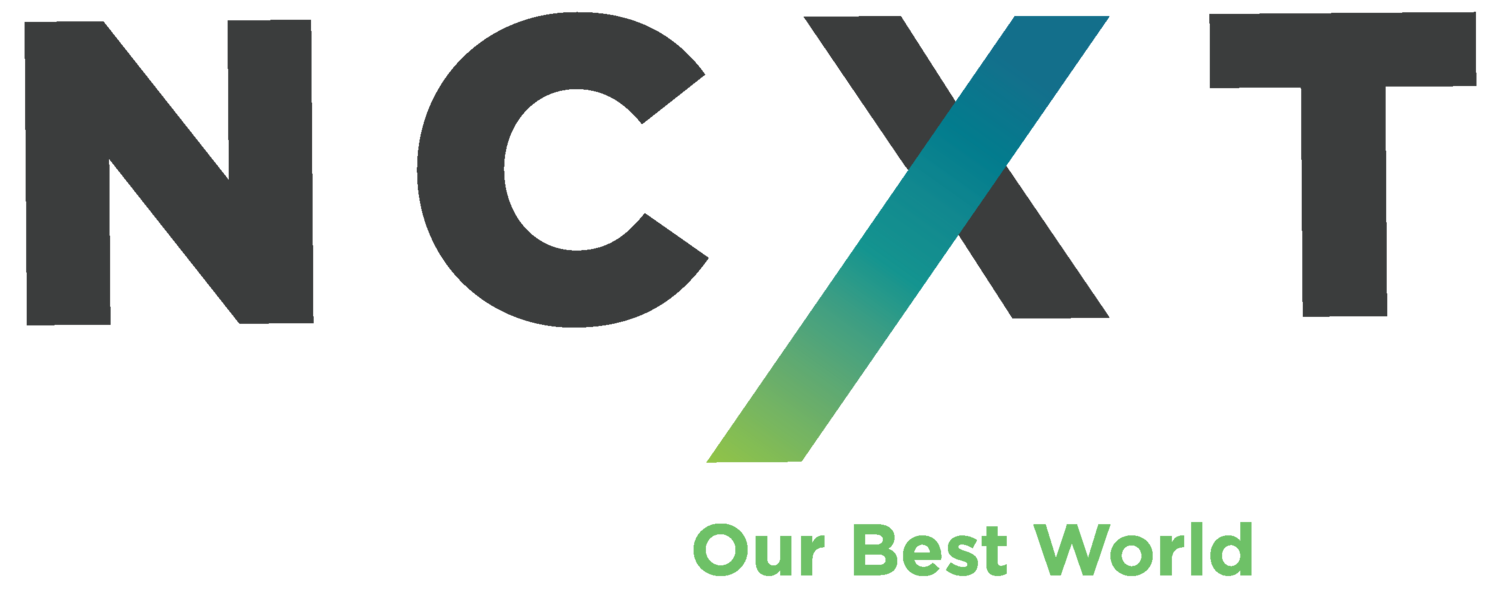It’s hard to learn on an empty stomach, and you can’t make lasting DEI changes without making sure all issues are seen. Read more about how NCXT builds lasting DEI change.
Exemplifying a Bias Toward DEI Action
If your organization is getting all of the attention for all the wrong reasons, you know it is time to make a change.
However, it’s difficult to know whether making changes within your locus of control is prudent and appropriate or if patiently folding into broader organizational initiatives is more important.
And as courageous leaders, we choose to do both, just like leaders in the City of Minneapolis IT Department.
Courageous leaders have bias toward DEI action and scope changes within their locus of control.
The City of Minneapolis IT Department is making a change. While the city is responding to the call for equity, inclusion, and justice in various ways, the folks in IT have decided to move forward on their own. They are chartering an Equity and Inclusion Board (EIB) to foster an equitable, inclusive and supportive culture for employees across the entire organization and the public.
There are a few tell-tale signs that you should lead your department through DEI initiatives while the broader organization moves at a different pace.
There’s a discernable difference in experiences between staff coinciding with their group identities. Surveys or one-on-one conversations may reveal that groups have different levels of satisfaction, trust, or confidence, which should cause you to evaluate your structures for inclusion.
The organization is struggling with DEI. It's unlikely that your department is impervious to organizational currents, and you should take precautions to shield your staff from discouragement or harm.
Action aligns with your integrity. As MLK once said, “The time is always right to do what is right.” The time might be right for your department, even when your organization is deliberating. Seize the opportunity to exemplify DEI leadership and give your colleagues the opportunity to observe, learn, and act.
Your organization has unique challenges. They’re serious, and you and your colleagues need to address them. It’s a blessing when you’re able to identify these challenges before they impact your staff. However, when it comes to DEI, the team’s experience of real pain or harm precedes proper DEI improvements.
Don’t wait if your organization to act when you know there is an imperative within your department. While broader organizational changes are afoot, like with the City of Minneapolis, it’s wise and courageous to support and sustain your team’s immediate needs.
Reach out to us at NCXT to discuss your department’s DEI needs.
Diversity and Inclusion as a Competitive Advantage
Recruiting and retaining diverse talent is not only a competitive advantage; it’s the only way to to compete in an interconnected world. There are real world and bottom line implications in getting it wrong. The converse is also true. Getting it right means higher profit margins and a more inclusive workplace.
palaces for the people: a library's place in the modern age
launching intern programs that make your DEI action plan real
It’s Black History Month, and many leaders see this month as a to time recommit and unravel the disenfranchisement of Black workers. Make your DEI action plan real and create an inclusive talent pipeline by launching or upgrading your intern program.
Contact NCXT about starting your intern program.
Bri Frederick, Data Science Practice Lead at DataDrive, looks to the future while implementing their new intern program. As she put it,” We wanted to (and still want to) figure out how best to support, encourage, and contribute to the growth of people who are new in their careers or are exploring careers.”
That future-forward thinking is remarkable because it's all about improving the pipeline. To have a DEI impact, you must consider the skillsets your company and industry needs 1 - 3 years from now. You may think, “but wait, my interns are only going to be working here for the summer.” You are correct! But positioning interns to apply for permanent roles after graduation or continuing part-time throughout schooling contributes to the talent pipeline for your company and your industry overall. That is real DEI action.
Give your interns a balanced and healthy start with growth-oriented, bite-size chunks of work. At DataDrive, interns got started by documenting the data science toolset landscape and presenting their results to the company. Bri found her interns to be “...curious, eager, and enthusiastic about taking on new challenges.” She went on to point exclaim, “I love that they are ready to dive in and learn.” Minds with high-plasticity are genuinely remarkable, but remember that even experienced professionals take 90-days to reach their stride. Channel your enthusiasm into creating assignments that support the interns' growth and development, and realize that their contributions to projects, products, and services will take time to materialize.
Interns need to be a part of your team and supported once they leave; you’ll receive rewards for doing so. It’s just as Bri said, interns are “...awesome sources of feedback on what we could do better.” In the interests of DEI, implement intern feedback while teaching them to identify healthy work environments, and steer clear of disfunction. Give them confidence that you’ll have their back now and well into their careers. Make them part of the team. Stay in touch even after they’ve returned to school, started applying for permanent positions, or decided to launch a start-up. Your intern program is shaping the pipeline and young people’s lives. Stay engaged and take your role seriously.
The bloody and fierce battles fought and won in civil rights arenas across the globe erected ladders for Black workers to climb through higher learning and ascend professional ranks. Build more ladders and open more doors by making your DEI program real, using intern programs to create an inclusive talent pipeline.
Want some help getting started? Reach out to NCXT to schedule a conversation today.
Our Best World™ as a guide in uncertain times
finding the human in the digital age
using incentives to fuel transformation
Let’s talk about how giving your team clarity and motivation with incentives can fuel your world-changing transformation. I’ve seen three no-frills steps create effective incentive plans, and I’ll go into detail on those today.
Why incentives?
When embarking on ambitious change, it’s tricky to articulate a clear path forward while emerging and complex forces are shaping the terrain in near real-time. On slick treads, your team will struggle to gain traction on the new terrain. And even worse, their lack of a clearcut path and traction will push your vehicle for transformation off course.
Reach out for an advisory call now
Imagine, though, looking from where you’re situated today and seeing a well-worn path cut through the rugged terrain you must cross. Having a clear line of sight, you can see all the way to your destination, the glimmering transformation you envision.
Your team needs to have that line of sight. A solution I’ve seen work on teams small and large, local and global, is using smart incentives. Here’s how:
Spark the fire, then fuel the flame
Validate your transformation before incenting your team to blaze the trail. Begin by leveraging existing incentives to fuel low-cost, low-resource efforts that demonstrate the benefit of your change. These preliminary steps attract more resources to your change. They ensure calibration toward true north, and a viable path to get there. Once achieved, you’re ready to add more fuel to the fire and heat up the transformation.
Make it inclusive and equitable
Include everyone trudging through this journey of transformation in your incentive plan. It’s the right thing to do, and it ensures your whole team is united in leaving basecamp, and that you don’t face any ethical or legal obstacles along the way. Keeping the caravan together disallows stratifying incentives between titles or departments. Provide equitable opportunities to contribute, and apply the same rules to all.
Keep the incentive hitched to the goal
The ultimate determinant for distributing the incentive must be reaching the final destination. Staying on course with this principle might be the most difficult because virtuous efforts sometimes lead us astray. People are people. Failures happen, and here’s the human truth of the matter: failures are more likely when teams know they will be rewarded even when they don’t reach the destination. Do not implement an incentive out if it can’t be withheld.
Incentives will take your transformation from a simmer to an all-out blaze. Just make sure you are on the right path, equitably incent everyone on the journey, and hold your goal as the ultimate destination. Reach out to us at NCXT to talk about fueling your next transformation.
Your fresh path to antiracism
Use committees to overcome DEI headwinds
Too many leaders struggle to see Diversity, Equity, and Inclusion initiatives take flight. At NCXT, we usually see this realized through a mismatch of moral and business imperatives, misalignment of grassroots actions and top-floor executives, or a shared atmosphere of unrealistic and undirected expectations.
When You Want to Delight Customers, It's Time To Get Rid of Clients
It happens far too often. Consultants, designers, and experts agree to assist their clients in developing a new product or service that will delight customers and generate new revenue. But after stepping through all phases of their project, they find themselves feeling despair, having left the client’s customers disappointed.
Please, stop disappointing customers. Delight customers by getting rid of your clients.
Putting the Customer at the Center of Everything We Do
4 Ways to Stop Worrying About Compliance
Stay Profitable by Evolving Your Infrastructure
Transform Into a Customer Experience Expert
Don’t Lose Your Best Employees to Pandemic Uncertainty
While you and your workforce have likely already made big and small changes to manage this new reality, it’s a good time to take a proactive approach so you’ll be prepared for twists and turns that may lie ahead. Ideally, by following these tips, you’ll be able to maintain critical support for your workforce regardless of what happens.

















